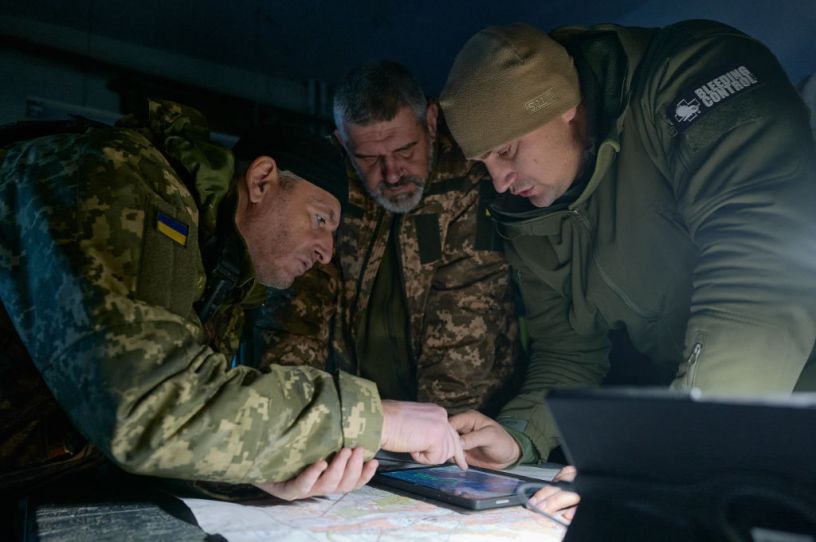Breaking the Deadlock in Ukraine

Two months have passed since Ukrainian forces liberated Kherson, a regional capital in the south and the last major territorial loss for Russian forces in Ukraine. While combat remains fierce, Ukrainian forces have been unable to make similar advances—a dynamic largely dependent on which armaments NATO allies are willing to send Kyiv.
Last week, the U.S., Germany, and France announced plans to transfer armored fighting vehicles to the Ukrainian military. Washington approved the shipment of 50 Bradley infantry fighting vehicles, known as “tank-killers” for their ability to strike tanks from more than two miles away. But like the German-made Marders Berlin pledged, Bradleys can only do so much.
“Infantry fighting vehicles operate in teams with tanks,” said Sławomir Dębski, director of the Polish Institute of International Affairs. “We have just agreed to send the first part of this team. For optimal usage of these vehicles, we need to supplement them with tanks.”
To that end, Dębski said, German-made Leopard 2 tanks are the obvious choice to upgrade Ukraine’s arsenal of Soviet-era tanks.
Polish President Andrzej Duda agrees. He announced Wednesday Poland plans to provide Ukraine with a “company” of its own Leopards in concert with other NATO members, though a German spokesman told Reuters Wednesday that it wasn’t aware of such a request. (There are an estimated 2,000 Leopards in arsenals across Europe, though shipping them to Ukraine requires German approval, and Chancellor Olaf Scholz, a consistent opponent of providing more advanced weaponry to Kyiv, has said allies should coordinate weapons deliveries.)
U.S. Deputy Assistant Secretary of Defense Laura K. Cooper said at a press briefing last week that NATO is now “positioning Ukraine to be able to move forward and retake territory.” Significant tank deliveries would confirm that’s more than just rhetoric.
Other nations are weighing the option, which could put Germany in the familiar position of playing catch up on support for Ukraine. The United Kingdom is reportedly planning to send Kyiv its Challenger 2 tanks ahead of a possible Ukrainian counteroffensive in the spring.
The Ukrainian military has also requested access to the Pentagon’s supply of U.S.-made M1 Abrams—a highly mobile, well-protected, and deadly variety of battle tank. But the Abrams also comes with its own set of logistical challenges.
“With every different donation of equipment comes different requirements for training and maintenance, and when you start adding up all of these different systems, that really does become kind of a logistical burden,” Eric Edelman, former U.S. ambassador to Turkey and Finland and under secretary of defense for policy, said in an interview. “The problem with the Abrams is that it is very heavy, so it takes a lot of fuel to operate, and it is very hard to maintain.”
The Pentagon is likely watching and waiting to see how successfully Ukrainian forces are able to integrate the Bradleys, but if past operations using Western weapons are any indication they’re likely to catch on quickly.
Since November, Russian forces have launched deadly artillery bombardments and dug their heels into positions in the southern Zaporizhzhia oblast and eastern Luhansk oblast. Meanwhile, fighting to take the strategic city of Bakhmut in Donetsk rages on, with Russian mercenaries claiming to have captured the nearby town of Soledar on Tuesday and Ukrainian troops denying the claim. Visitors to the eastern frontline have compared the scene—with its trenches, shell holes, and corpses—to the First World War.
Ukrainian officials have predicted that Russian President Vladimir Putin will call up another 500,000 conscripts this Saturday. A possible new drive to seize Ukrainian territory could come from the south, east, or north, by way of Belarus, where the Russians have reportedly planned joint military exercises with Belarusian troops later this month.
Ukrainian forces, meanwhile, have targeted Russian logistical hubs, making it harder to support such massive troop deployments, Edelman said. “Then the question will be whether they can use these armored personnel carriers and tanks to figure out where the weakest points are to break through and then surround or envelop these Russian forces.”
Pairing personnel carriers like Bradleys with battle tanks—either new Western tanks or ones currently in Kyiv’s arsenal—could help its infantry quickly exploit any weaknesses in Russian lines.
But armored fighting vehicles are just one component of a broader strategic equation, with Ukrainians pressing for additional arms like the long-range Army Tactical Missile System, or ATACMS, which the Biden administration had previously refused to supply for fear of escalation with Moscow.
“We are entering a decisive phase,” Ukrainian Foreign Minister Dmytro Kuleba wrote on Facebook last week. “There can be only one goal: the victory of Ukraine.”